
Pine marten reintroduction: how we're helping and where to find them
Once persecuted to extinction, find out how we're helping pine martens make a welcome return to the UK's woods.
Read the story
Digital Content Manager
Life among the trees can be tough. But thanks to some very special adaptations, a wealth of amazing animals thrive in our forests. Evolution is at the root of all life on earth, driving animals to adapt to survive. After evolving for millennia, the species below are all perfectly adapted to forest life.
The goshawk is one of the UK’s most elusive birds, yet it's anything but shy and retiring. These raptors are heat-seeking missiles armed with a lethal arsenal of adaptations.
Goshawks launch themselves through holes in the overgrowth by tucking up and thrusting their feet forward. They fold up their wings to sail through gaps in the trees, while their tail opens out like a third wing to maintain lift. Meanwhile, semi-transparent second eyelids close to protect their eyes from thorns. With this extraordinary agility, goshawks are able to catch squirrels, wood pigeons and more.
The pine marten’s habitat is, unfortunately, part of what makes this mammal so rare. It favours woodland, but is mostly confined to Scotland due to habitat loss and historical persecution.
Powerful semi-retractable claws mean they are excellent climbers. They also have flexible ankle joints. This means they can race down trees as well as up them when pursuing prey. We are supporting efforts to ensure pine martens survive outside of Scotland. The Pine Marten Recovery project has introduced more than 50 Scottish martens to the woods of mid-Wales. There are also plans to reintroduce martens to the Forest of Dean soon.

Once persecuted to extinction, find out how we're helping pine martens make a welcome return to the UK's woods.
Read the storyTreecreepers are a particular favourite of mine: scuttling up tree trunks with ease. They are perfectly adapted for life in the forest, with strong feet and long, curved claws. These come in handy when searching for insects in the crevices of tree bark. A delicately curved bill extracts prey while balance is maintained with a stiff tail.
It is also thought that the bill and claw length of treecreepers can vary according to the seasons. This allows them to maximise foraging opportunities across the year.
What an animal! Those huge mandibles are impressive, but they aren’t what makes the stag beetle a forest specialist. That is all down to their larvae.
Stag beetles spend anywhere from three to seven years in their larval stage. Buried underground, they feast on that woodland speciality: rotten deadwood. Adults survive for a mere few months, using up their fat reserves, but will also drink tree sap and eat fallen fruit.
It's no secret that red squirrels are adapted for woodland survival. Their long tail and sharp claws help them scale towering trees and leap from branch to branch.
Like pine martens, their flexible ankles afford amazing manoeuvrability. But red squirrels have an additional adaptation. With four toes on their front paws but five at the back, they have even greater leverage when up in the trees.
Extinct for centuries, wild boar have returned to some of the UK’s woods. This is thanks to escapes from farms and possibly illegal releases. Their strong snouts are adapted to rooting through woodland soil, while wiry brown hair helps them blend in among the trees. Piglets are even striped like humbugs for extra camouflage.
What makes wild boar most successful, however, is their incredibly varied diet. They will dine on virtually anything found in the forest, from worms and bird eggs to carrion and acorns.
The purple emperor is one of the most elusive animals in the UK. It spends the bulk of its life up above the canopy, fluttering around in search of aphid honeydew and tree sap. But this isn’t their sole foodstuff.
Purple emperor butterflies have, shall we say, exotic tastes. They will descend from their lofty empire above the oaks to feed on animal droppings, carrion and urine. They can’t get enough of the salts contained in this unconventional butterfly food: an essential part of their diet.
Most bats pluck their insect prey from mid-air. The brown long-eared, however, prefers to snatch its food from the trees. They have even been known to take spiders from their webs.
It is all thanks to those incredible ears. Brown long-eared bats have exceptionally sensitive hearing. Combined with their quiet form of echolocation, this makes them lethal hunters.
Small but perfectly formed. The business end of a woodlouse spider makes it a formidable forest predator. They may be just 3cm long at the most, but these little spiders come with impressive mandibles. Their prey? Woodlice, of course!
These spiders patrol their woodland habitat, hunting for woodlice underneath logs and stones. Their powerful fangs come into play when they hunt: piercing the louse’s tough exoskeleton with ease.
Learn how to track elusive woodland animals with our poos and clues swatch book
Buy it now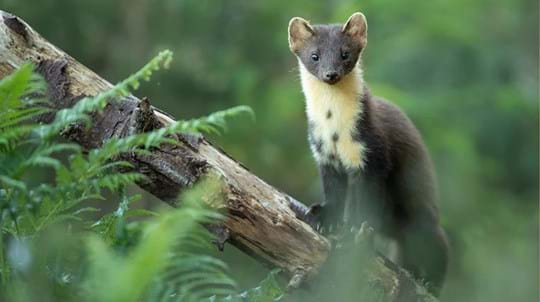
Blog
Hannah Vickers • 15 Apr 2019
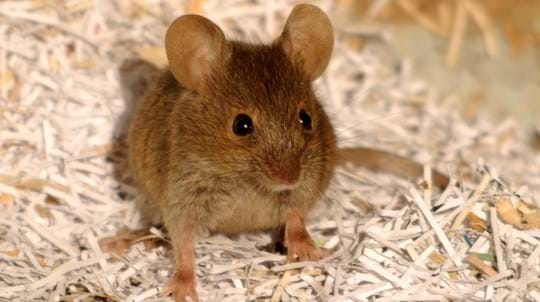
Blog
Helen Keating • 28 Mar 2022
Blog
Charlotte Varela • 10 Apr 2019
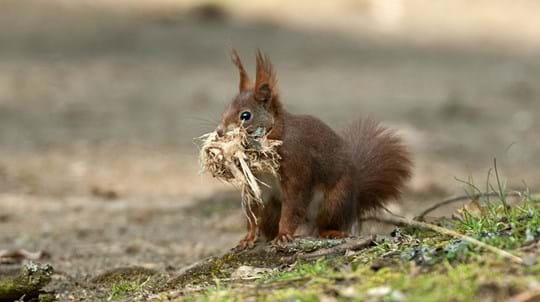
Blog
Charlie Mellor • 09 Jun 2020
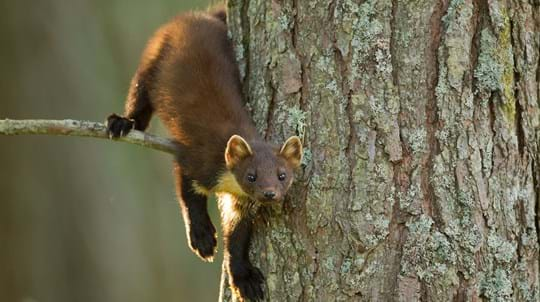
Blog
Charlie Mellor • 14 Jun 2018

Blog
James Martin • 03 May 2019
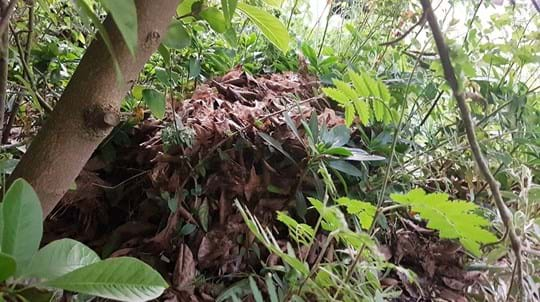
Blog
Charlie Mellor • 18 Sep 2020